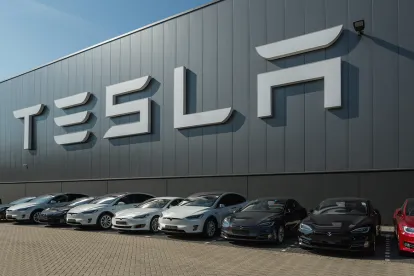In its March 25 decision, the NLRB unanimously held that: (1) Tesla violated the National Labor Relations Act (“NLRA”) after prohibiting employees from talking to the media; (2) Tesla did not violate the Act by calling employees into a meeting to discuss their potential unionization; and (3) Tesla must order CEO Elon Musk to delete his tweet about the employees’ attempt to unionize, as it was unlawfully coercive in violation of the Act.
Media Contact Provision of Confidentiality Agreement Violated the Act
In 2016, Tesla required its employees to sign a confidentiality agreement in response to leaks of confidential company information. As part of the agreement, Tesla reminded its employees that it is “never OK to communicate with the media or someone closely related to the media about Tesla, unless [the employee has] been specifically authorized in writing to do so.”
Here, the Administrative Law Judge found that the confidentiality agreement was lawful because considering that it was sent in response to leaks of confidential information, employees would “reasonably interpret” the agreement to apply only to proprietary information. Further, the Judge found that any potential interference with Section 7 rights was outweighed by Tesla’s interest in protecting such confidential information.
In 2017, the NLRB set a new standard for determining whether facially neutral work rules or policies would unlawfully interfere with, restrain, or coerce employees in violation of Section 7 of the NLRA. In Boeing Co., 365 NLRB No. 154 (2017), the Board held that: “[W]hen evaluating a facially neutral policy, rule or handbook provision that, when reasonably interpreted, would potentially interfere with the exercise of NLRA rights, the Board will evaluate two things: (i) the nature and extent of the potential impact on NLRA rights, and (ii) legitimate justifications associated with the rule.” In conducting this balancing test, the Board considers the rule or policy from the employees’ perspective. If the balance favors general employer interests, the rule or policy will be deemed lawful, but if the potential interference with Section 7 rights outweighs any possible employer justification, the rule will be deemed unlawful.
The Board applied the Boeing standard for facially-neutral work rules and reversed the ALJ, and held that the provision in the agreement that prohibited employees from talking to the media without permission was unlawful in violation of Section 8(a)(1). The Board applied prior precedent and found that the language in the media-contact provision applied to information beyond what the confidentiality agreement defined to be “confidential information,” even if read in conjunction with the introduction explaining that the policy was created in response to leaked information.
The Board held that “[t]hat general statement d[id] not change the meaning of the plain language of the media-contact provision, which employees would reasonably interpret to apply to communications with the media about any matter regarding [Tesla], including working conditions, labor disputes, or other terms and conditions of employment.”
Additionally, because the provision did not include language limiting the restrictions to statements made to the media on behalf of Tesla, and required prior approval for any statements whatsoever, it clearly infringed on the employees’ Section 7 rights. Tesla’s justification for attempting such restriction did not outweigh the right of its employees to communicate with the media about labor disputes and their terms and conditions of employment—a concept “central to the Act”—and, as such, Tesla violated Section 8(a)(1) by maintaining such a provision.
Tesla Did Not Violate the Act for its Conduct when Its Employees Attempted to Unionize
In 2017, a Tesla employee sent a petition to HR and to CEO Elon Musk, discussing the safety concerns of many employees and noting their intent to form a union in order to protect themselves and ensure their safety. Shortly after circulating the petition, HR brought the employee to a conference room with Musk, seeking to directly discuss the employee’s safety concerns. During the meeting, the employee noted that he thought a union would help give the employees a voice. Musk responded, “[Y]ou don’t really have a voice. The [Union] is a second—like two-class system where [the Union] is the only one that has a voice and not the workers.”
First, the Board found that the meeting with Musk did not violate Section 8(a)(1), as Tesla did not unlawfully solicit the employee’s safety concerns and impliedly promise to remedy them. The meeting was a result of the employee’s petition that had been sent directly to HR and Musk, and was an attempt to “understandably” learn more about the serious safety concerns alleged in the petition. Further, the petition did not detail any specific hazards and there was no explicit or implicit promise to remedy the safety concerns. As such, the meeting could not be categorized as an unlawful solicitation of grievances.
Second, the Board concluded that Musk’s statement was lawful because “an employer may criticize, disparage, or denigrate a union without running afoul of Section 8(a)(1),” as long as the employer does not threaten an employee’s Section 7 rights. Musk did not imply that Tesla would use unlawful means to ensure the employees were unable to unionize, and simply explained one effect of unionization—that employees would take up any grievances with Tesla through the Union, who would speak on their behalf.
Elon Musk’s Tweet Violated the Act
Even though the Board found that Tesla did not violate the act by calling an employee into a meeting to discuss unionization, the Board affirmed the ALJ’s finding that Musk’s subsequent tweet on May 20, 2018—to approximately 22 million of his followers—was unlawfully coercive: “Nothing stopping Tesla team at our car plant from voting union. Could do so tmrw if they wanted. But why pay union dues and give up stock options for nothing? Our safety record is 2X better than when plant was UAW & everybody already gets healthcare.” The Board agreed that Musk’s commentary lost the protection of the Act because it amounted to a threat that employees would lose their stock options if they unionized; it was not a “prediction carefully phrased based on objective fact[s]” of what may occur as the result of good-faith collective bargaining. As part of its decision, the Board ordered Tesla to have Musk delete his unlawful tweet and take steps to ensure he complies.
Takeaways
This decision instructively highlights the pitfalls with public communications on social media by the employer and supervisors in response to unionization, reaffirming the principle that while employers have a right to free speech during an organizing campaign, that right must be exercised in a manner that is not overly coercive. The Board held that Musk’s tweet, to his 22 million followers, was unlawful principally because of the reference to the fact that Tesla employees would “give up stock options for nothing.” This was construed as a threat—which is unlawful—rather than a potential consequence of good-faith collective bargaining negotiations if a Union were selected by the employees, which could have been lawful. A fine distinction can be drawn based on the manner in which the statement is phrased and the surrounding context.
In addition, this decision reinforces that employers may lawfully restrict employees from talking to the media about proprietary information, but such provisions must be carefully crafted to ensure that they do not infringe on employees’ Section 7 rights. Employers should take care in ensuring that they do not categorically restrict employees from talking to the media without prior authorization.





 />i
/>i

